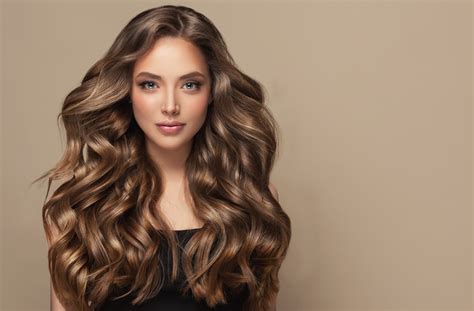Introduction
Clip-in extensions have revolutionized the hair industry, offering an easy and instant way to add length, volume, and color to your natural locks. With an estimated 50% of women in the United States using hair extensions, it’s clear that the demand for these transformative hairpieces is on the rise.

Benefits of Clip-in Extensions
| Feature | Benefit |
|---|---|
| Convenience | Easy to apply and remove yourself in minutes |
| Versatility | Available in a wide range of colors, textures, and lengths |
| Damage-free | Does not require chemical treatment or heat styling |
| Temporary | Can be worn for special occasions or daily use |
| Affordable | More cost-effective than other extension methods |
Types of Clip-in Extensions
Based on Material
Human Hair Extensions
- Made from 100% real human hair
- Highest quality and most natural-looking option
- Can be styled with heat tools
Synthetic Fiber Extensions
- Made from synthetic materials such as polyester or nylon
- More affordable than human hair extensions
- Less versatile in styling options
- May have a shine that looks artificial
Based on Texture
Straight Extensions
- The most common type
- Can be styled straight, curled, or waved
- Versatile and suitable for most hair types
Wavy Extensions
- Add natural-looking texture
- Create volume and movement
- Great for adding fullness to thin hair
Curly Extensions
- Provide instant volume and fullness
- Available in different curl patterns
- May require special care to maintain curls
How to Choose the Right Clip-in Extensions for You
- Hair Length and Volume: Determine the length and volume you desire to match your natural hair or create a desired look.
- Hair Color: Choose extensions that match your natural hair color for a seamless blend, or opt for a different color for a dramatic transformation.
- Hair Texture: Select extensions with a texture similar to your natural hair to ensure compatibility.
- Quality: Look for high-quality extensions that are made from durable materials and will last with proper care.
Application of Clip-in Extensions
- Section your hair into layers.
- Clip the extensions onto the roots of your hair, starting from the back.
- Blend the extensions with your natural hair by gently teasing the roots.
- Style the extensions to your desired look.
Common Mistakes to Avoid
- Overloading: Using too many extensions can weigh down hair and cause damage.
- Improper Placement: Ensuring extensions are clipped close to the roots prevents slippage and ensures a secure hold.
- Excessive Heat Styling: Avoid high temperatures on synthetic extensions, as this can damage them.
- Neglecting Care: Regular washing, conditioning, and detangling will extend the lifespan of extensions.
Pros and Cons of Clip-in Extensions
Pros
- Convenient and quick: Easy to apply and remove without professional assistance.
- Versatile: Available in various colors, textures, and lengths to suit personal preferences.
- Damage-free: Does not require chemical treatments or heat styling.
- Cost-effective: Less expensive than other extension methods.
- Temporary: Can be worn for special occasions or daily use.
Cons
- Limited lifespan: Clip-in extensions typically last between 6-12 months with proper care.
- Can be bulky: Wearing too many extensions can create an unnatural look.
- May not be suitable for thin hair: Extensions require a certain amount of hair to blend seamlessly.
- May slip or move: Can be challenging to keep in place during physical activity.
FAQs About Clip-in Extensions
- How often should I wash clip-in extensions? About every 6-8 wears, depending on the frequency of use and how dirty they get.
- Can I sleep with clip-in extensions? It’s not recommended to sleep with clip-in extensions as they can tangle and damage hair.
- How long do clip-in extensions last? With proper care, clip-in extensions can last between 6-12 months.
- Can I dye clip-in extensions? Human hair extensions can be dyed, but synthetic extensions cannot.
- How do I store clip-in extensions? Store extensions in a cool, dry place, away from direct sunlight. Use a storage bag or breathable container for protection.
- Can I use heat on clip-in extensions? You can use heat on human hair extensions, but it’s important to use a low heat setting and protect them with a heat protectant spray.
- How do I avoid damaging clip-in extensions? Avoid over-brushing, using harsh chemicals, or excessive heat styling. Treat them gently and care for them regularly.
- Can I swim with clip-in extensions? While you can swim with clip-in extensions, it’s best to avoid it as chlorine and saltwater can damage the hair.
Potential Applications of Clip-in Extensions: The “HairChameleon” Concept
Clip-in extensions open up endless possibilities for hair transformations, empowering individuals to express their creativity and change their look instantly. We propose a new concept: the “HairChameleon,” a person who embraces the versatility of clip-in extensions to become a hair chameleon, blending seamlessly into different social environments or expressing their unique personality.
Conclusion
Clip-in extensions have democratized hair transformations, making it accessible and convenient for anyone to achieve their desired look. By understanding the different types, choosing the right extensions, and following proper care techniques, you can effortlessly enhance your hair with clip-in extensions and embrace the “HairChameleon” mindset.
